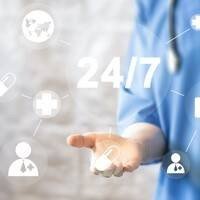
Stroke is one of the three most common severe diseases in Hong Kong, with over 12 million people suffering from stroke globally each year. In Hong Kong, it is the fifth leading cause of death, and in 2022, there were 3,057 registered stroke-related deaths. The number of stroke patients in Hong Kong has been increasing in recent years, and the age of onset is showing a downward trend. According to a report from the Stroke Research Group of the Department of Medicine, Li Ka Shing Faculty of Medicine, the University of Hong Kong, the incidence of young stroke (occurring between 18 and 55 years old) in Hong Kong increased by nearly 30% from 2001 to 2021.
Stroke, also known as "cerebrovascular disease," can be broadly divided into two categories: ischemic stroke, caused by a blockage of blood vessels in the brain leading to cerebral infarction, accounting for about 80% of cases, and hemorrhagic stroke, caused by blood vessel rupture leading to bleeding into the brain tissue, causing nerve damage. The mortality rate of hemorrhagic stroke is higher than that of ischemic stroke. When stroke symptoms appear, an average of 1.9 million brain cells die from a sudden lack of oxygen every minute, which can lead to severe disability in patients and impose a heavy burden on patients' families and society.
Some patients may experience a "mini-stroke" before a full-blown stroke, medically known as a "Transient Ischemic Attack (TIA)." A mini-stroke is caused by a temporary disruption of blood supply to the brain, resulting in temporary neurological dysfunction and stroke symptoms. Recognizing these symptoms early can help prevent a major stroke. It's crucial to remember the acronym "FAST". If the patient's "Face" is uneven, they have "Arm" weakness, or have difficulty "Speaking," it's vital to take them to the nearest Accident and Emergency Department quickly.
According to an international study, up to 90% of stroke cases worldwide are caused by ten risk factors, including smoking, alcohol consumption, lack of physical activity, unhealthy diet, social and psychological factors, central obesity, high blood pressure, high cholesterol, diabetes, and heart problems. Adopting a healthy lifestyle can reduce the risk of stroke. Maintaining a balanced diet, limiting the intake of oil, salt, and sugar, engaging in at least 150 to 300 minutes of moderate-intensity aerobic physical activity per week (such as brisk walking), avoiding smoking, and refraining from excessive alcohol consumption are crucial for stroke prevention.

















